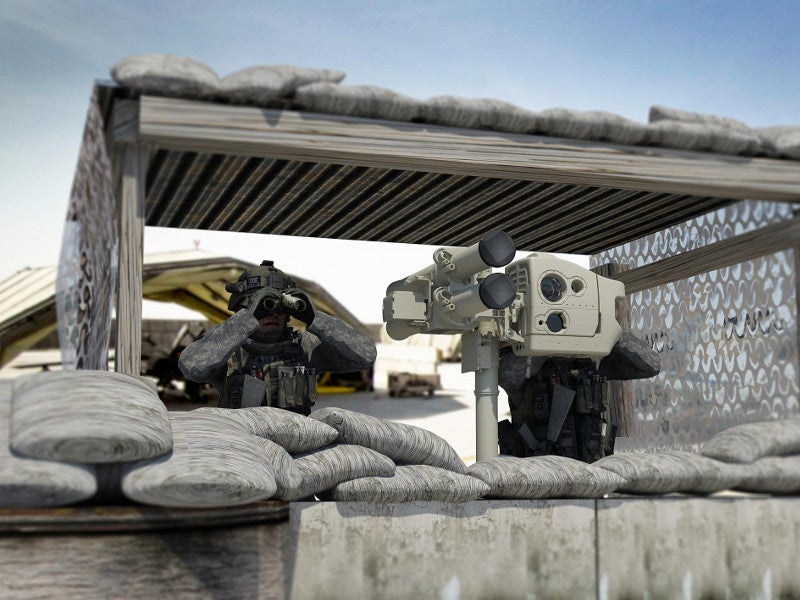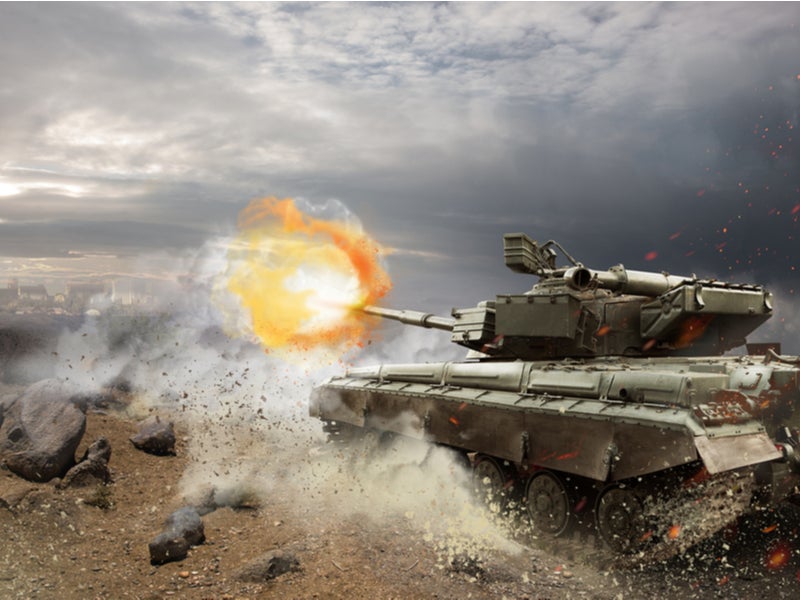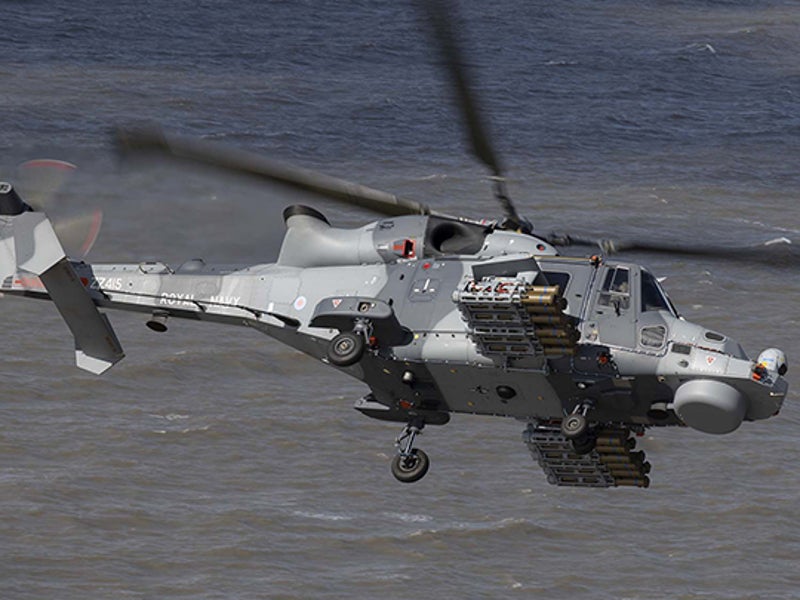Lightweight Multi-role Missile (LMM) is a surface-to-surface, surface-to-air precision strike missile developed by Thales for the British Armed Forces.
The low-cost missile provides quick response capabilities against surface threats, naval threats, and threats from aerial platforms.
The precision weapon system is expected to be inducted into service with the British Armed Forces by the end of 2020 and achieve full operational capability in 2024.
Known as ‘Martlet’ in the British Royal Navy, the LMM underwent its first successful firings from a AW159 Wildcat helicopter during a series of trials between April and May 2020, demonstrating its integration onto the Wildcat.
The missile can be launched in support of missions such as coastal and border protection, and safeguarding critical assets.
Lightweight Multi-role Missile design and features
The land variant of the Lightweight Multi-role Missile weighs 13kg and can be launched from air, land or sea from wheeled or tracked vehicles and other tactical military platforms such as fixed or rotary-winged unmanned aerial vehicles (UAVs), and fast in-shore attack craft (FIAC).
LMM measures 1.3m long and has a diameter of 76mm. It can be used for multi-role purposes for light and heavy platforms with a fast launch and fire-on-the-move capabilities.
The missile can target both traditional and asymmetric threats with high levels of precision and accuracy. The range of threats that can be engaged includes armoured personnel carriers (APC), tracked and wheeled vehicles.
The land-based weapon system is sealed in a canister and is capable of providing protection against surface threats from fixed installations or towed artillery.
The missile features a modular design and offers a minimum shelf life of 15 years with potential for re-use. The family includes anti-armour and warhead variants.
LMM can be integrated onto different gun systems and remote weapon stations (RWS), enabling greater protection of light 4×4 vehicles and armoured fighting vehicles (AFV). Subsystems of the missile include laser proximity sensor, tail fins and laser receiver modules.
Guidance features of LMM
The missile system includes guidance electronics, control actuator system, and dual-mode fuse (impact and proximity modes). The guidance mechanism comprises the optical tracker system, which is fixed on the launch platform.
The guidance unit of the Lightweight Multi-role Missile is installed within an optically stabilised mount which includes equipment such as thermal cameras, charged coupled device (CCD), automatic target tracker (ATT) and the missile laser guidance unit.
Once the target is indicated, the missile operator directs the LMM onto the target and brings the ATT into play, which fixes the gaze on the target. The system is then turned on and the missile is fired to attack the threat. The weapon system includes a manual guidance mode, which allows the operator to interrupt the ATT at any stage of engagement and take manual control over the operation.
The control and actuation system (CAS) and control surfaces allow the munition to perform high lateral acceleration (LATAX) manoeuvres for the engagement of mobile targets.
The key features of the guidance processing unit (GPU) include autopilot software and processing hardware to provide commands to the CAS for precision guidance.
Warhead details
The missile is fitted with a pre-fragmented blast warhead along with shaped charge penetrator and matching laser proximity fuse. The warhead facilitates the engagement of the target with minimum collateral damage and high lethality. The low collateral damage capability makes the missile ideal for urban environments.
LMM can be used to provide blast fragmentation effect, shaped charge effect, and combined target effect. The safe arm unit (SAU) enables the munition to complete the required sequence of events in a time-bound manner to arm the warhead and activate a detonation.
Propulsion and performance
The Lightweight Multi-role Missile is propelled by a two-stage rocket motor and solid fuel propellant.
The first stage motor allows the missile to emerge from the launch tube without recoil. Once the missile leaves the canister, it travels to a safe distance before it is accelerated by the second stage motor to its maximum velocity.
Travelling at a speed of more than Mach 1.5, the weapon can attain a minimum range of up of 400m and a maximum operational range of more than 6km.
Launchers used for LMM
The weapon system can be launched from Lightweight Multiple Launcher – Next Generation (LML-NG), which is designed for installation on a vehicle or tripod for rapid launch of the missiles. LML-NG is capable of carrying two ready-to-launch missiles, enabling successive engagement of multiple threats to provide armed forces with quick response capabilities against a range of targets.
Thales RAPIDRanger multi-missile launcher can also be used to launch the high-precision missile. RAPIDRanger is a vehicle-mounted platform that can tackle cruise missiles, UAVs, and ground-attack aircraft.




